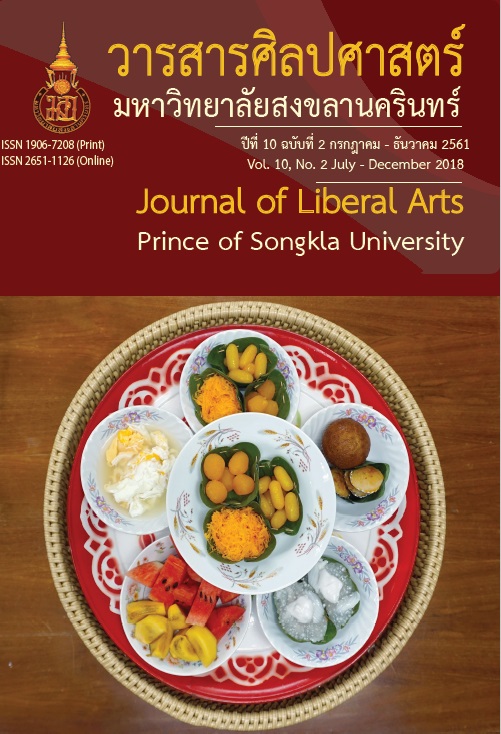Cultural heritage crisis: A case study of traditional murals in Isan Buddhist ordination halls
Keywords:
Murals in Buddhist ordination halls, cultural heritage, cultural crisisAbstract
This research on cultural heritage crisis, a case of traditional murals in Isan Buddhist ordination halls has 3 objectives: 1) to investigate local sociocultural factors in the Northeastern region after 1957, which affect the traditional murals in Isan Buddhist ordination halls; 2) to explore the physical crisis of traditional murals of Isan Buddhist ordination halls at the present time and 3) to study the realization of crisis through cultural heritage value of traditional murals by local people and society at the present period of time. This research employed qualitative research methods and highlighted the field work and study of traditional murals in Isan Buddhist ordination halls in 42 communities in Northeastern Thailand. Moreover, this research involves local people and society at the present time and thereby employing cultural crisis concept as a principle.
It was found that 1) local sociocultural factors after 1957 have influenced the crisis of traditional murals. This is because of the government policy on developing Thailand under the principle of “One Nation One Culture”. Furthermore, local people in Isan now have more relationships with other societies that have influenced various fields of the sociocultural system that is imposed by the Thai nation state including the forms of religious art from Bangkok. This is caused by lack of learning and conserving their cultural heritage systematically when other forms are dominant. 2) The physical crisis of traditional murals are in 5 aspects consisting of age-related deterioration, acts of nature, human negligence, acts of animals, and acts of humans. 3) Realization of cultural heritage value crisis resulting from demolition of ancient temples which had traditional murals in the ordination halls and replacing them and other structures with Bangkok styles. These are resulted from the change of local people’s thought after 1957 as it is influenced by external sociocultural factors and lack knowledge on internal communal culture. In this respect, the government should educate local people and raise their awareness in value of cultural heritage on its traditional murals as well as conservation and restoration of the remaining traditional murals. Therefore, temples, communities and related societies must actively participate in the maintenance of traditional murals and seek to take advantages of the murals on cultural heritage in various dimensions effectively.
Downloads
Published
How to Cite
Issue
Section
License
The authors retain the copyright to their article but the Journal of Liberal Arts, Prince of Songkla University reserves the exclusive rights to first publication.






